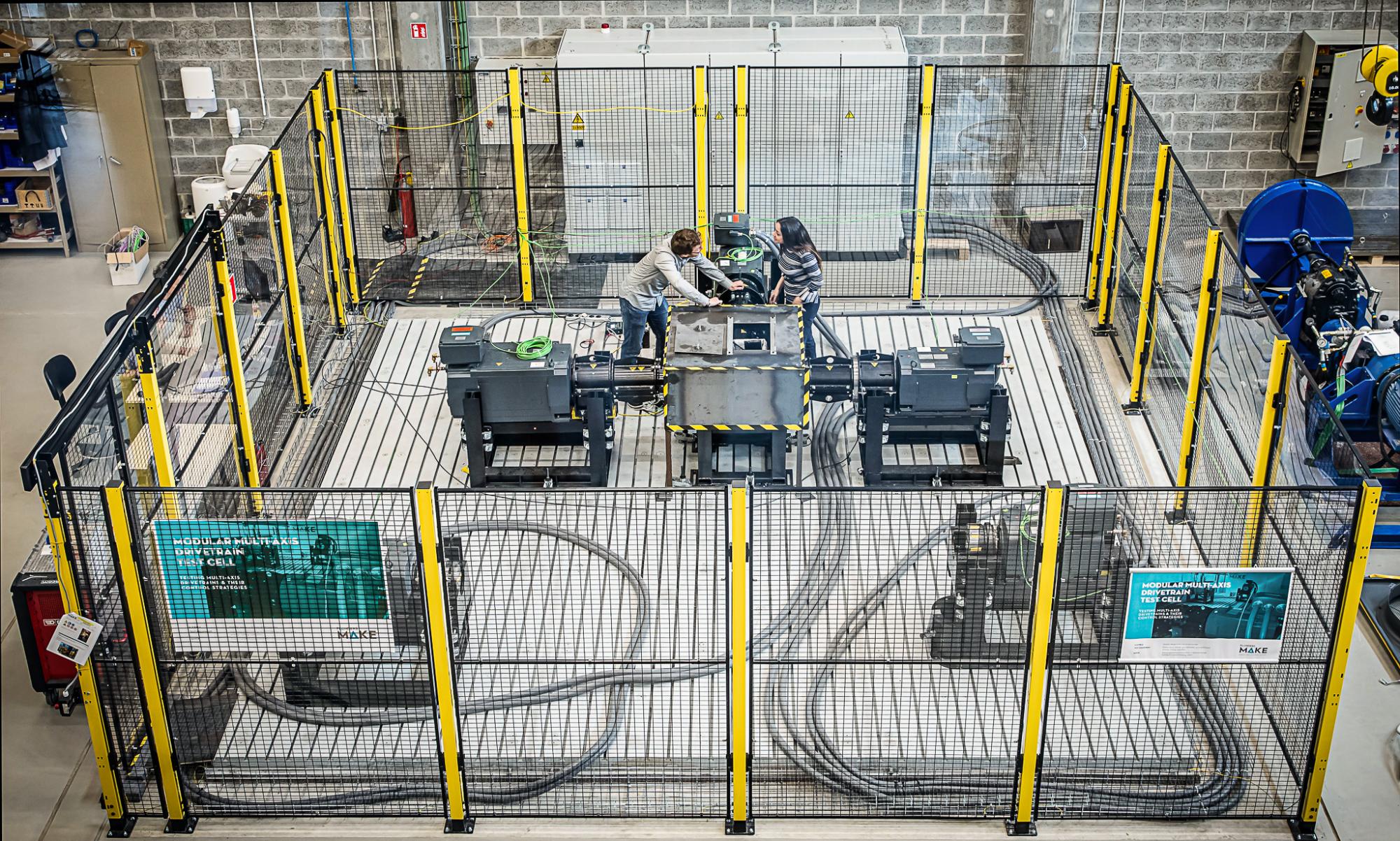Design and prototyping of drivetrains for electric & hybrid vehicles
We design and prototype electric and hybrid vehicle drivetrains in terms of energy consumption, lifetime, costs and comfort. Using our simulation platform, we optimise the design and control architecture of these drivetrains. Furthermore, we integrate proof-of-concepts for validation on test vehicles in lab and road environments.

What do we offer?
Manufacturers of electric and hybrid vehicle drivetrains and their components are constantly looking for ways to improve performance, energy efficiency, reliability and/or compactness. Our simulation platforms facilitate a top-down and bottom-up approach for the architectural design, modelling and integration of electric and hybrid drivetrains and their components for a wide variety of applications:
- Hybridisation & electrification;
- Vehicle dynamics control strategies for torque vectoring and (active) suspension;
- Impact of increased autonomy and functional safety levels on vehicle drivetrains;
- Advanced ECO energy management systems (charging, driving, routing and comfort).
We support your entire process: from application requirements over architecture, conceptual evaluation, (co-)design and building proof-of-concepts, including software implementation, up to validation.
Our unique software
We use various unique software tools in this process:
- Virtual simulation and optimisation platform, developed in-house in MatLab, for energy management strategies for hybrid electric vehicle, hybrid energy storage system and powertrain sizing
- Static, hybrid and dynamic models and parameterised finite element (FE) models, e.g. electric variable transmissions (EVT), in Matlab/Simulink
- Validated vehicle models for vehicle dynamics applications
Customer success story
Full electric drivetrain range optimisation.
Problem
Power consumption is the main challenge in electric vehicles. How can we maximize the driving range without compromising on the vehicle’s performance?
Solution
We use software algorithms that manage the control of every wheel independently. We apply torque vectoring (TV) and at the same time optimise e-drivetrain losses.
Customer value
The vehicle’s efficiency and range significantly improved after implementing these developments. By characterising component losses through software development, we were able to lower the e-consumption by 4.6%. When combining this software development with torque vectoring, validation tests on proving grounds displayed a decrease of e-consumption by 11.4%.